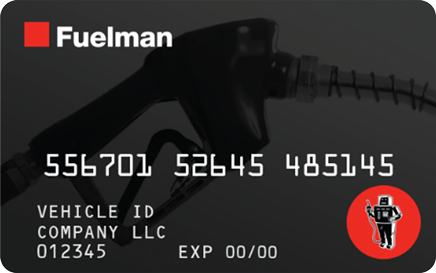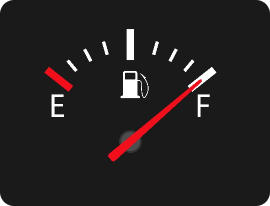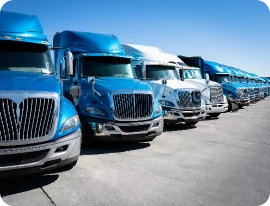4 WAYS FUELMAN CAN HELP REDUCE FLEET FUEL COSTS
Save at the pump, improve your fuel efficiency, and make every gallon count. Follow these tactics to reduce your cost-per-mile.
GET A FUELMAN FLEET FUEL CARD.
Bypass the retail gas and credit cards in favor of a fleet card from a trusted issuer like Fuelman that has a long history in the business. That way you’ll get:
Access to rebates nationwide at 40,000+ stations on the Fuelman Discount Network1
Simplified reports for easy vehicle expense accounting and tax reporting, saving you time
Custom fuel controls to help prevent misuse and let you see your expenses by driver and by vehicle
IMPROVE FUEL EFFICIENCY.
Monitor and manage fleet operations to optimize mileage and avoid wasting time and fuel. Fuelman provides reports that help you better manage fuel expenses.
Consider investing in fleet-tracking technologies like telematics to help optimize driving techniques.
Leverage GPS technology to determine the best routes possible, ideally combining pick-up and drop-off schedules to minimize driving and save on fuel. Where possible, driving at off-peak hours can help.
Identify and reduce excessive idling and out-of-route miles. Encourage or require drivers to find meals within a specified radius of the route, and to use Fuelman’s mobile Site Locator to find on-route in-network fueling.
STAY ON TOP OF FLEET MAINTENANCE.
Reduce costs by adopting a proactive maintenance schedule, and avoid breakdown costs that go beyond repairs to include wasted time, lost wages, and disrupted delivery schedules.
Don’t put off routine maintenance. A properly tuned engine can help increase gas mileage by an average of four percent, according to the U.S. Department of Energy.2
Check tire pressure regularly—ideally before each trip. Vehicles with tires inflated at 50 percent of the recommended pressure level can use up to 10 percent more fuel.3
Enroll in Fuelman Maintenance. Besides providing reminders to help you stay on schedule, Fuelman Maintenance lets you track maintenance history, schedule and approve services, and make payments using your Fuelman card – all in one place, 100% digitally. You’ll also be eligible for discount prices.
CHOOSE THE RIGHT VEHICLE FOR THE JOB.
Maximize efficiency by regularly evaluating factors like routes, vehicle capacity, and equipment against freight requirements. Make adjustment as necessary for:
Consider driver/vehicle proximity to the route. Advanced fleet-tracking programs can fully, or partially, automate dispatching the closest vehicle. A human dispatcher can also be taught to take proximity and driving efficiency into account when dispatching for a new order or appointment.
Avoid unused capacity and unnecessary weight. Schedule deliveries to maximize density. At the same time, avoid unnecessary weight by ensuring vehicles only carry the equipment and payload required for that trip.
Better Navigate the Fuel Space with Fuelman
The support that Fuelman gives us is really critical to the day-to-day operations of our business. The partnership with Fuelman helped us navigate the fuel industry and fuel space as a whole. They've helped us negotiate with our fuel vendors and garner really impressive savings over the years.
Christopher Maher, VP Supply Chain
Clean Harbors
FUEL UP nationwide on the FUELMAN® Network
Fuel Cards For Local And Nationwide Fleets



